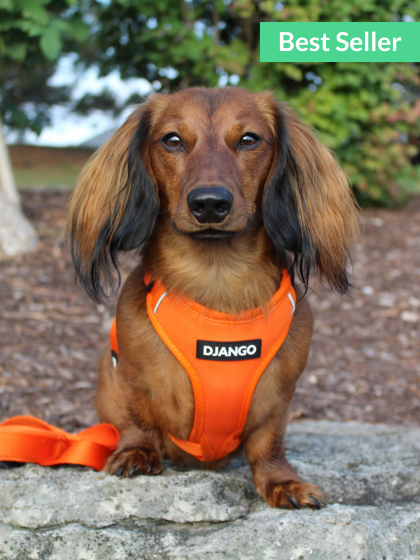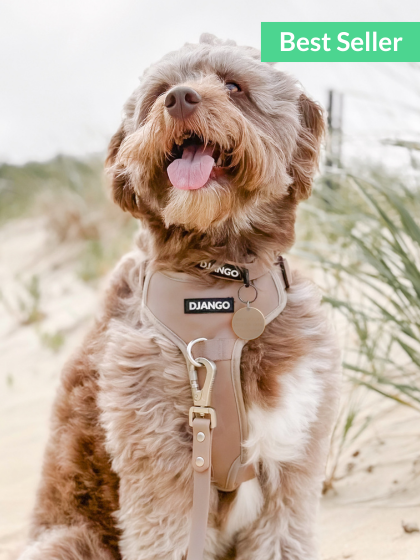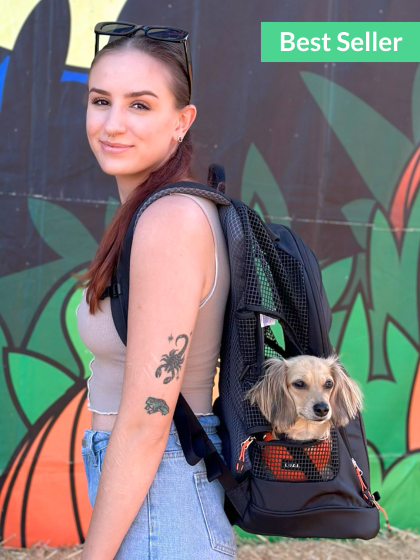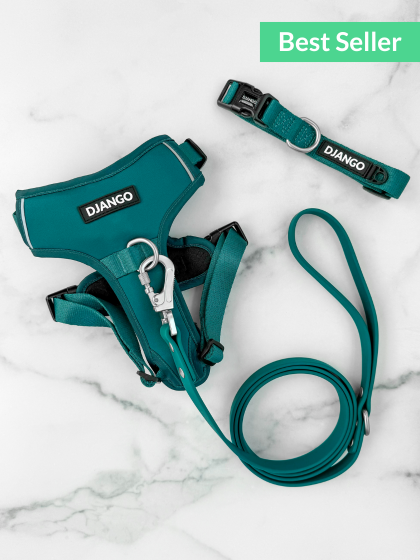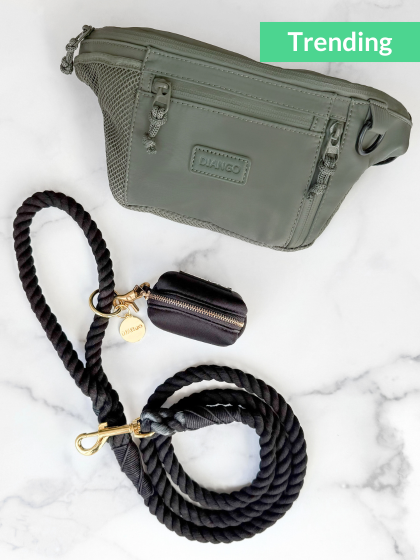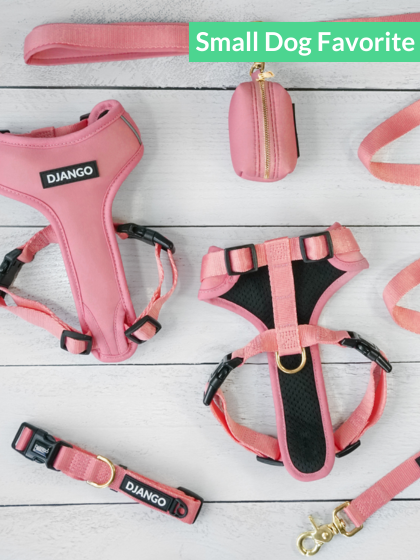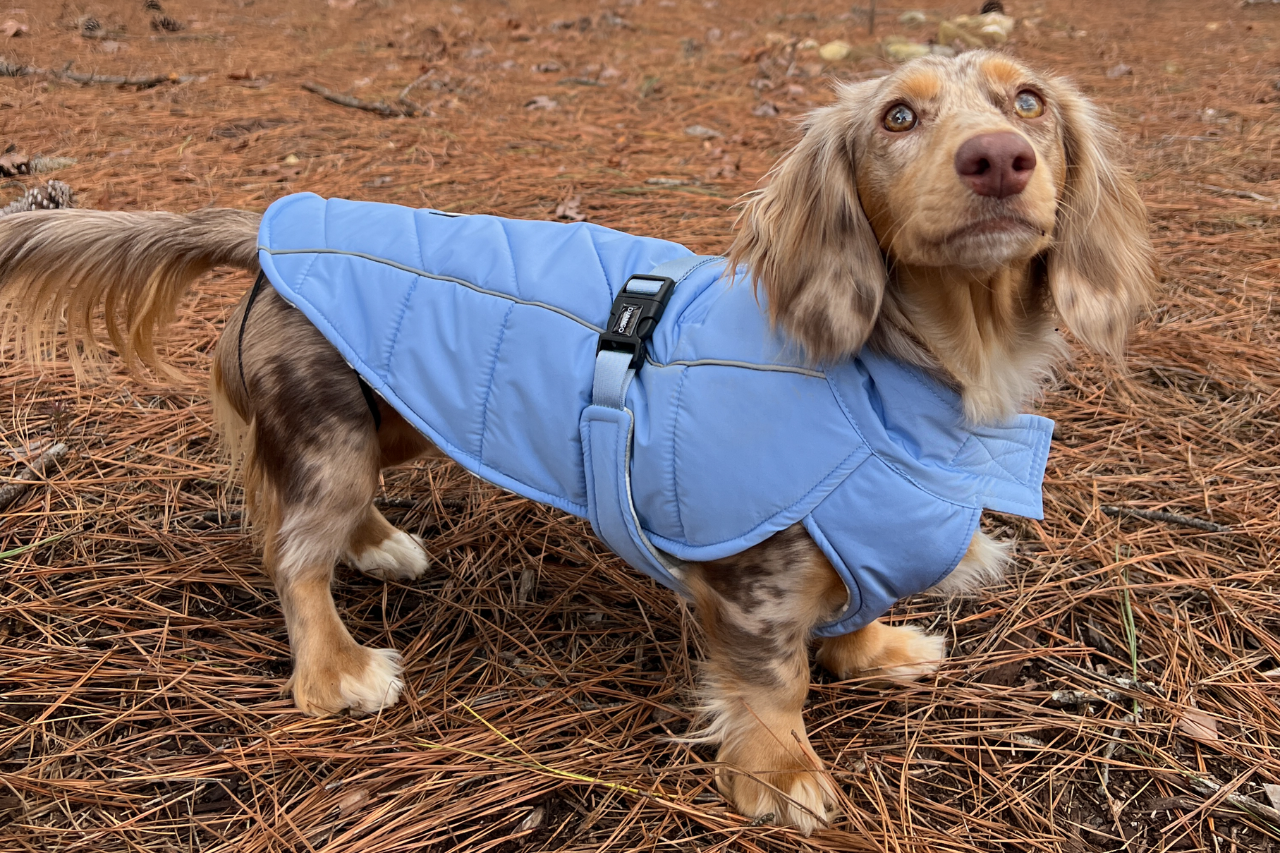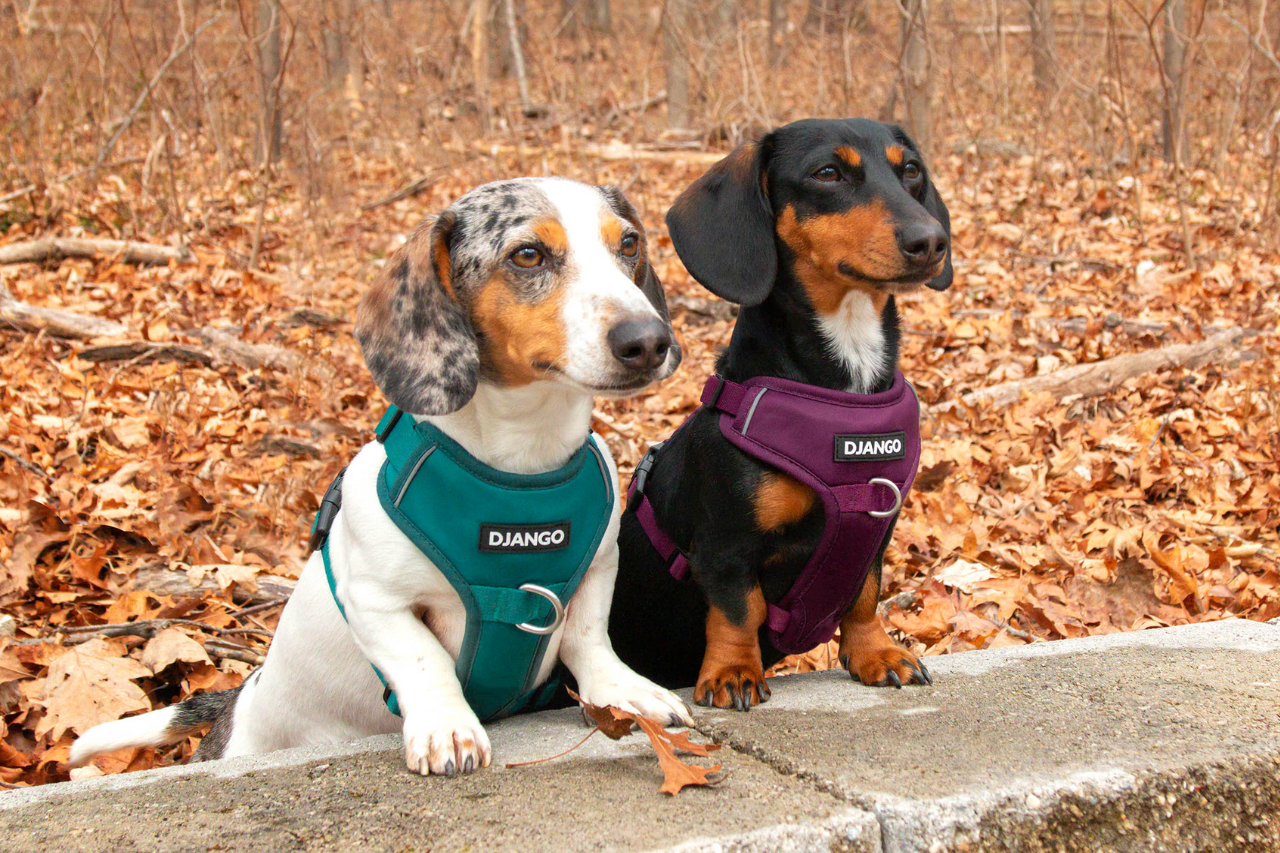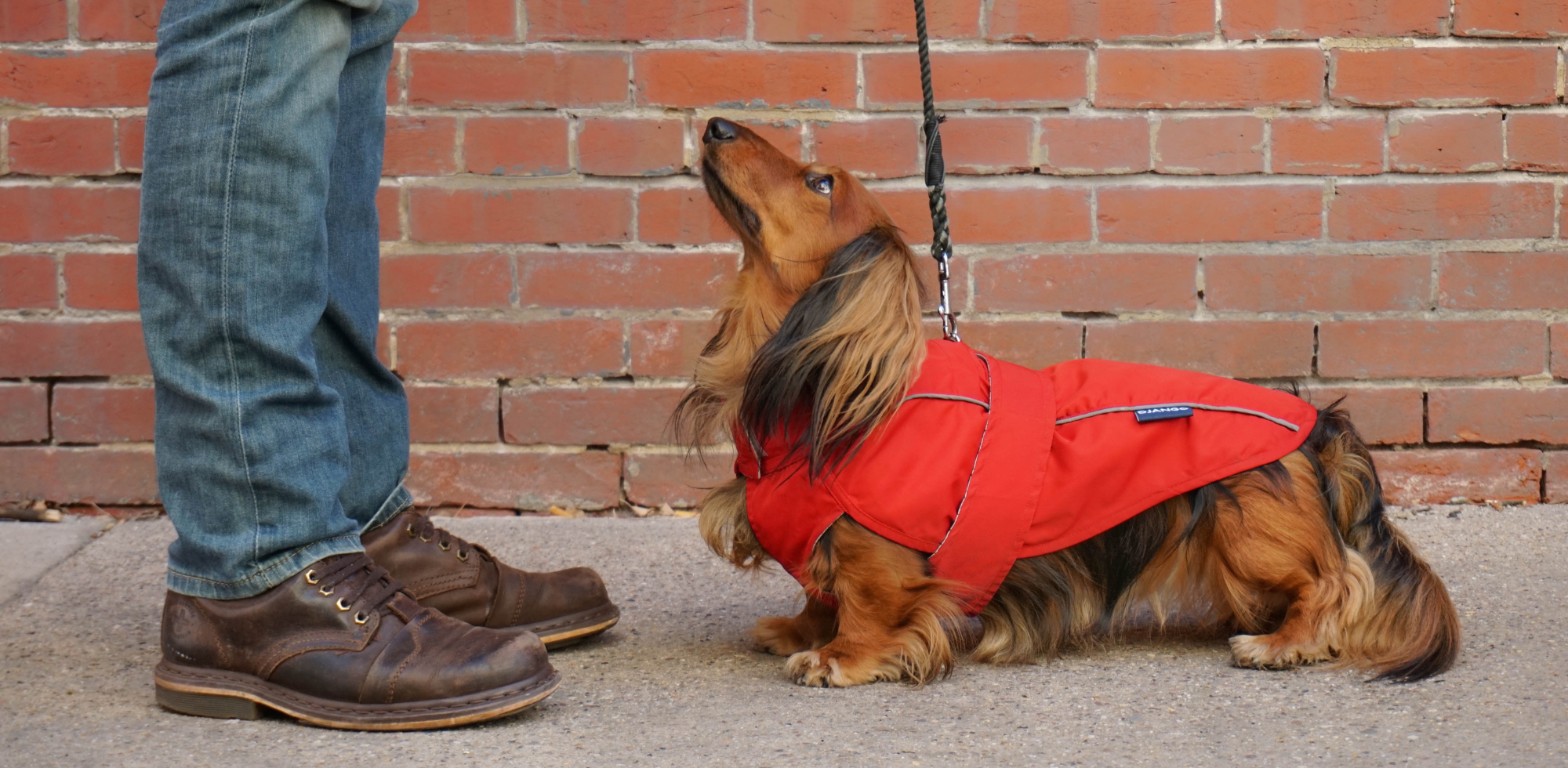Updated October 2025
Dog backpack carriers have become an essential accessory for pet owners looking to bring their four-legged family along with them on outings and adventures. Whether you are hiking rugged trails with a small dog, strolling in the suburbs with a pup who has limited mobility, or even commuting in the city, a pet backpack carrier allows you to keep your dog safe and comfortable while keeping your hands free.
But are dog backpack carriers good for dogs? Do dogs enjoy being carried in backpacks? And how long can pups comfortably stay in this type of pet carrier? In this DJANGO Dog Blog article, we answer all of these common dog backpack carrier questions. We also offer tips on helping your dog adjust to riding in a pet carrier backpack.
Are backpack carriers good for dogs?
Pet backpack carriers can be great modes of transport for dogs, especially small dog breeds, as long as they are used correctly and designed with dog safety and comfort in mind.
The best dog backpack carriers will have these features built into their design to ensure a pet's wellbeing:
- Ventilation: Look for large, wide-grid mesh panels that allow proper ventilation and cross breeze. Avoid pet carriers with just one small ventilation panel or window and/or several tiny "air holes". Dogs can overheat easily. The best dog carrier backpacks offer ample airflow at all times.
- Locking zippers: Locking zippers are those that cannot be nudged open by ;a dog's nose when he or she is riding inside the backpack carrier. They are a safety feature to ensure your pet remains enclosed and safe when you're on the move.
- Interior safety tether: This small leash secures to your dog's harness and prevents him or her from jumping out of the backpack and running away. For safety reasons, we always recommend attaching this interior leash to the back D-ring of your DJANGO dog harness (and not a dog collar).
- Strong and supportive base or "bed": The floor of the backpack where your dog sits should be strong, supportive, and perfectly parallel to the floor at all times.
Below: This is the DjangoPack™ Dog Carrier Backpack, a premium and large pet carrier backpack designed to safely and comfortably carry dogs and cats up to 20-25 lbs. Designed for hiking, commuting, and extended wear, the DjangoPack™ features wide-grid ventilation panels, adjustable hip and sternum straps, and padded shoulder straps and back panel.
Are dog backpacks safe for dachshunds and dogs with sensitive backs?
For dachshunds and other dogs with sensitive backs, we strongly advise investing in a high quality horizontal dog backpack carrier that properly supports your dog's weight and keeps him or her on all fours at all times.
While being on all fours is the safest position for all dogs, it is especially important for dogs prone to back injury or spinal cord issues like Intervertebral Disc Disease (IVDD).
What do we mean by a "horizontal" dog backpack carrier? Here are the key differences between horizontal and vertical dog backpack carriers:
- Horizontal dog backpack carriers. These pet backpack carriers support dogs horizontally instead of vertically. They allow your canine companion to be on all fours at all times and do not position the dog in an unnatural or uncomfortable position. Your dog can sit, stand, and even lie down comfortably.
- Vertical dog backpack carriers. These backpack carriers require dogs to be placed in an upright and vertical position—like they are standing on their hind legs with their front paws up in the air. Although vertical pet backpack carriers make for really cute photos, they are not recommended by canine neurologists and can be dangerous for many dogs. As our dog's neurologist from Red Bank Veterinary Hospital in New Jersey confirmed:
- The vertical positioning of the dog puts excessive downward pressure and stress on the spine.
- Vertical-style dog backpack carriers are especially dangerous for dog breeds prone to back problems, dogs with sensitive backs, dogs with Intervertebral Disc Disease like our dachshund Django, and dogs that are overweight.
Are backpack carriers safe for dogs with IVDD?
The best dog backpack carrier for dogs with any type of back problem—including a genetic predisposition to IVDD—are horizontal dog backpack carriers. These offer a strong, supportive base and allow your dog to stay comfortably on all fours and horizontal to the ground at all times. Vertical dog backpack carriers, on the other hand, put excessive downward pressure and stress on dogs' spines.
Our dachshund, Django, had emergency IVDD surgery in January 2020 after one of his discs herniated. Disc material had entered his spinal canal and caused severe pain and complete paralysis in his back legs.
Although Django's IVDD surgery was successful and he made a wonderful recovery, his back legs are still weak to this day. What's more, Django has never been able to regain the endurance he once had. After 20-25 minutes of walking, he typically slows down and needs to stop.
Given Django's physical limitations, our DjangoPack™ horizontal dog backpack carrier has been a lifesaver for him and us. It offers Django a safe and comfortable place to rest when his back legs weaken and he cannot continue walking. Most importantly, it supports his weight fully and protects his back and spine by offering a strong, padded, and horizontal bed for him to enjoy.
Do dogs enjoy being carried in backpacks?
Yes! Most dogs love backpack carriers!
Dogs are highly intelligent beings. Once they realize their dog backpack carrier means more adventures with their human, they'll jump for joy when they see their backpack carrier on the floor. As a maker of a premium and modern dog backpack carrier ourselves, we've even received countless customer photos of dogs sleeping inside their backpack carrier at home. They essentially love their backpack carrier so much that they refuse to leave it once home!
With all of that said, some dogs may obviously be wary or even afraid of pet carriers. Dogs that are nervous, anxious, and/or jumpy may not initially be comfortable riding inside a backpack. For this type of dog, it is best to introduce the backpack carrier to them slowly and train your dog to get used to riding in a pet carrier.
How long can dogs comfortably stay in a backpack carrier?
How long can you sit comfortably in an airplane seat before wanting to stand up and stretch your legs? Dogs are similar to humans in this way. Yes, they can comfortably ride in a pet backpack carrier for a long time without complaining, but it is best to allow them to stretch their body and legs whenever possible.
As a rule of thumb, we suggest giving your dog breaks from his backpack carrier every 20-30 minutes. Give him or her a chance to get out, move around, and exercise.
Smaller, lightweight breeds like dachshunds can handle slightly longer periods as long as they are comfortable and the backpack carrier is spacious, well-ventilated, and supportive.
Look for cues from your dog as well. Adult dogs are smart and communicative; they will likely tell you when they're ready to walk again. If your dog is standing up, shifting weight, and pressing his or her nose against the mesh window, it's time to let your pup out to walk on a leash again.
How do I get my dog used to a backpack carrier?
Is your dog new to pet carriers? Is he or she nervous, excited, or jumpy in any type of dog backpack carrier or pet purse? It is very common for dogs to be scared of new carriers or even try to jump out, especially if they're not used to being carried.
In this DJANGO Dog Blog article, we provide clear steps to help your dog get used to a new pet carrier. The good news? With patience and a little bit of effort, almost all dogs will get used to riding in a pet carrier backpack.

